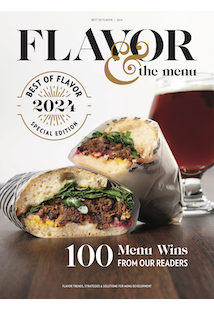
While the story behind its name is up for debate, the boodle fight is unequivocal in its reputation as an over-the-top, literally-hands-on feast. When served in a traditional setting, large banana leaves are spread over a long table and then topped with an eclectic mix of dishes that usually includes meats and seafoods, as well as vegetables, rice, spring rolls, fritters and fruit. Iconic Filipino foods like lechon, chicken adobo and lumpia might feature in a boodle fight, but there is no set recipe or rules—aside from the meal being eaten by hand, or kamayan style.
Whether due to its lack of a standard formula or no-utensils custom, the boodle fight has yet to translate from an at-home gathering into a restaurant dining experience. Nevertheless, certain concepts have hosted boodle fights and kamayan feasts as special events rather than regular menu offerings. In Charleston, W.V., Barkadas combines Filipino and American cuisines into globally inspired—but still accessible—dishes like the Adobo Chicken Salad and the Crispy Pork Belly Burrito (with toasted garlic, sweet soy, jicama-peanut slaw, jasmine rice and peanuts). While boodle fights aren’t part of the regular menu, the restaurant has hosted them on-site for private events.
Less than a year ago, Naks made its debut in New York’s East Village with a blended approach that might resonate with mainstream diners. Its prix fixe option is billed as a kamayan feast (rather than a boodle fight) and comprises a dozen dishes served atop banana leaves. But rather than present them all at once, the foods are grouped and staggered—more akin to a multi-course meal than a buffet spread.
The experience of dining out is hardly new, but in a market chock-full of inventive dishes and social media posts of said dishes, the on-site element is all the more vital. Meals that require some degree of interactivity—whether by cooking at the table or forgoing silverware—bring a sense of novelty, while communal formatting encourages a shared experience. Just about every world cuisine includes dishes that fit the bill—menu developers need only look for them.







